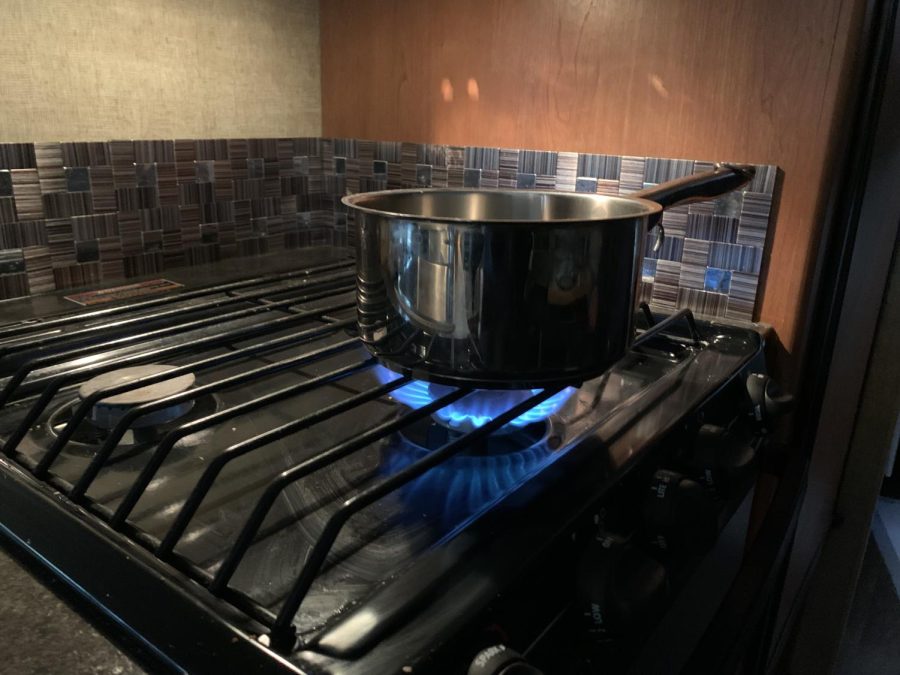Gas stoves leak climate-warming methane gas
New Stanford study finds environmental factor
There are 40 million natural gas stoves across the United States.
February 7, 2022
During the recent cold snap, biology teacher Devin Tillman set her thermostat lower than the average household to reduce carbon emissions.
She considered replacing her electric stove with a gas one, but after reading a Stanford University study about the effects of gas stoves, she is changing her mind.
“That is a waste of resources and can be costly,” Tillman said. “It also is impacting our environment in a negative way.”
Gas stoves emit a climate-warming methane gas that is affecting the ozone layer, according to the Stanford study into emissions from natural gas stoves, cooktops and ovens in residential homes.
Researchers estimate up to 1.3 percent of the gas used in a stove leaks into the atmosphere. With more than 40 million gas stoves across the United States, they have a climate impact comparable to the annual emissions of 500,000 cars.
“The finding was that there were a lot of missing sources of methane from city wide emissions,” said Eric Lebel, senior scientist for Physicians, Scientists and Engineers for Healthy Energy and lead author of the study. “So one of the ideas was that the buildings themselves may be emitting some methane from appliances and leaky pipelines.”
Methane is a greenhouse gas 86 times stronger than carbon dioxide over a 20 year timescale, pound for pound. It is also an explosion hazard at a 5 percent concentration.
“The gas stoves are both a climate and a health risk,” Lebel said. “They have the potential to emit methane gas which is damaging the climate while also emitting nitrogen dioxide.”
Eighteen brands of stoves and cooktops were used in the study, ranging in age from three to 30 years old. It didn’t matter what brand or age the stoves were, the presence of leaks was consistent. In fact, 80 percent of methane emissions occurred when the ovens were off.
“The rate of emissions we found are directly proportional to how much gas you burn,” Lebel said. “If you turn a burner on higher or use a second burner, you’ll get more NO2 emitted from your stove. It’s important, if you have a stove vent, to turn it on anytime that your burners are lit.”
Last year, The Biden Administration set a goal to reach a 50 percent reduction of greenhouse gas emissions by 2030 and net zero emissions by 2050 to comply with the Paris climate agreement.
“As I have traveled to other countries in the world that do not have as rigorous environmental laws in place, I have personally seen the effects of greenhouse gasses,” Tillman said. “There is a difference in the air and water quality.”
Lebel’s research is one of many studies involving the changing temperature of Earth’s climate, and students such as senior Kayleigh Klinksiek are paying attention.
“I personally believe that we should be doing almost everything within reason to fix climate change,” Klinksiek said. “It’s important to make more conscientious decisions in our daily lives to fix environmental hazards when we can.”
The Department of Energy is working toward a 100 percent carbon-free power sector by 2035 in support of President Biden’s climate goals.
“It is really difficult, almost impossible, to take carbon out of burning natural gas, but it is possible to take carbon out of the electricity grid,” Lebel said. “We’re quickly moving towards a more renewable grid, and it will, over time, clean up dramatically. So, there’ll be a cleaner source of energy for home buildings.”
















